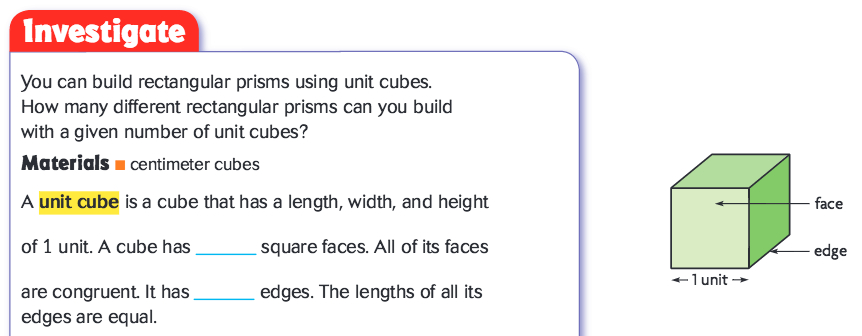NCTM (National Council of Teachers of Mathematics) devotes an entire section of Principles to Actions to using and connecting mathematical representations. Why are representations so important? One reason is access. NCTM states that all students should have access to the support and resources needed to maximize their potential.” (2014, p. 59)
The National Research Council states, “Because of the abstract nature of mathematics, people have access to mathematical ideas only through the representations of those ideas.” (p. 94-95)
This statement has huge implications. If we don’t expose students to a variety of representations we withhold a resource that supports students, literally withholding entry points to the mathematics itself. Also, who benefits most from a variety of representations? I would say all students, but especially students those who are English-language learners and students with disabilities. Exposure to a variety of representations can level the playing field by providing multiple entry points to the concepts being taught.
What might this look like?
NCTM describes five categories of representations: contextual, physical, visual, symbolic, and verbal (2014, p. 24-25). We’re getting ready to move into a unit on volume in 5th grade and I’ve been thinking about what representations we might use to introduce 5th grade students to the concept of volume.
Here’s the textbook’s first lesson on volume:
The textbook suggests telling students what a unit cube is (symbolic or verbal, depending on if it’s read to students) before it shows a visual and has students fill in some numbers (symbolic) that should be pretty straightforward for a kindergarten student exploring geometry (CC.K.G.2.4). There has to be a better way.
Our team chose to use Packing Sugar, a 3-act task from Graham Fletcher, which introduces volume in a completely different way. The task begins with a video of a sugar cube next to a box of sugar cubes. (see below)
Here we are with an engaging visual representation combined with a context ripe for exploration. There are no blanks to fill in with symbols before students begin interacting with the idea of volume. After the video, students are encouraged to formulate a problem themselves and take a guess. For me, the primary reason to use a task like this is because it introduces the concept of volume to students using a representation that’s more accessible than those in the textbook. Students are immediately invited to begin thinking of how the cubes may be packed in the box and how we might go about finding the total of cubes that would fit in the box.
Why don’t we expose students to a variety of representations?
Why did NCTM have to devote an entire section to this practice in Principles to Actions? I think it’s because sometimes we consider representations such as number lines, drawings (or video), and concrete objects not as “mathy” as other representations like expression and equations. Bill McCallum gives them the nod here though, in the mathematical practices document with commentary for grades K- 5. In the section on modeling with mathematics (MP4), geometric figures, pictures, and physical objects are explicitly mentioned by name as being appropriate in the early grades.
How do we move forward?
When planning to introduce a new concept or a specific task, brainstorm how a concept can be represented physically, visually, symbolically, contextually, and ways that students may discuss it. Also, ask yourself, “Which representations would give the most students access to the mathematical ideas?” and “What representation could I encourage students to use next?” This type of deliberate, anticipating work based around representations can provide powerful learning experiences for all learners.
References
Leinwand et al. (2014). Principles to actions: Ensuring mathematical success for all. Reston, VA: National Council of Teachers of Mathematics.
Kilpatrick, J., Swafford, J., & Findell, B. (2001). Adding it up: Helping children learn mathematics. Washington, DC: National Academy Press.
Thanks for sharing your thinking Zack! I can’t wait to read future posts!
Thanks Claire!